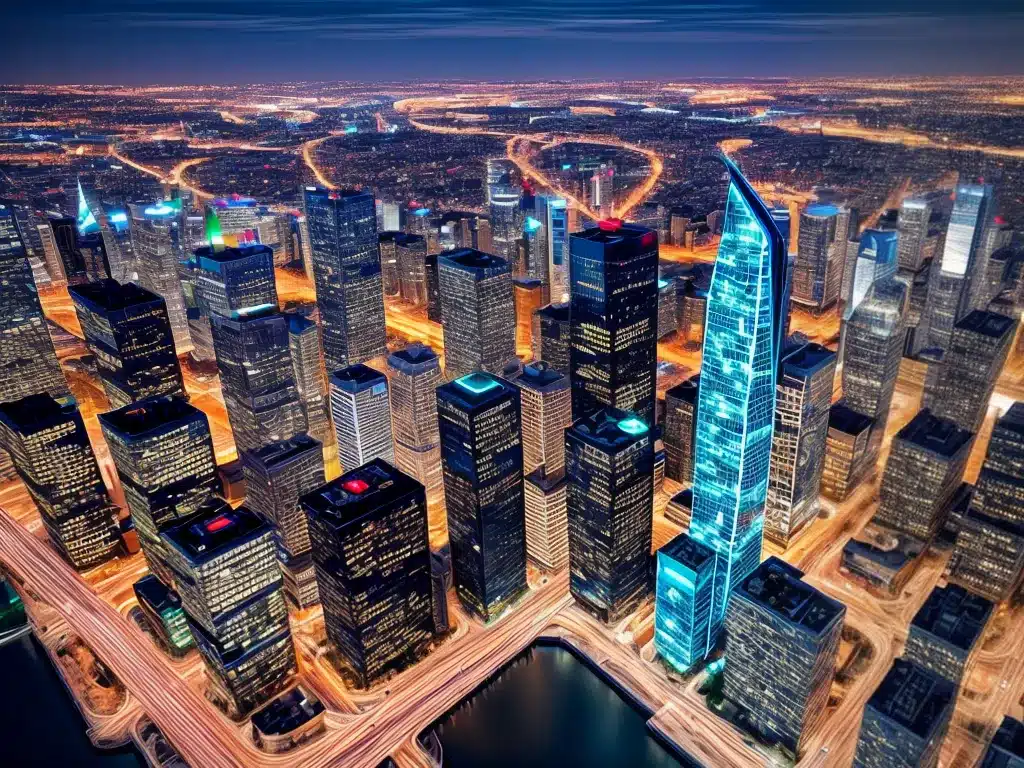
Smart Cities: How IoT is Improving Urban Life
Introduction
I live in a large metropolitan city that struggles with issues like traffic congestion, aging infrastructure, and pollution. However, new smart city technologies enabled by the Internet of Things (IoT) are helping to solve these urban challenges and improve my quality of life. In this article, I will discuss how IoT is transforming cities into more livable, sustainable, and technologically advanced places.
How IoT Works in Smart Cities
The Internet of Things refers to a network of internet-connected objects and devices that can collect and share data. In a smart city, IoT sensors and devices are embedded throughout urban infrastructure like roads, buildings, and utility grids. These devices gather real-time data that is analyzed by AI algorithms to optimize city operations and services.
For example, smart energy meters track household energy usage and adjust the electricity grid accordingly. Smart streetlights brighten or dim based on pedestrian traffic. Autonomous vehicles rely on vehicle-to-vehicle and vehicle-to-infrastructure communication to improve road safety. All of this data flows through a centralized control center where city operators use analytics dashboards to monitor the city.
Improving Transportation
One major benefit I’ve noticed from smart city technology is improved transportation infrastructure and mobility. Traffic congestion used to be a huge headache, but new IoT solutions are helping to optimize traffic flow.
-
Smart traffic lights use real-time traffic data to adjust signal timing, keeping vehicles moving efficiently through intersections. This has reduced my commute time substantially.
-
Smart parking meters make it easy for me to pay for parking with an app and even reserve a spot in advance. Sensors let me know where open spots are located.
-
Public transit improvements like electronic bus arrival signs and mobile payment make taking the bus or train more convenient.
-
Ride hailing and car sharing services enabled by geolocation and mobile apps provide me with flexible mobility options.
Enhancing Public Safety and Emergency Response
I feel safer in my city knowing that IoT technologies are at work 24/7 to protect residents. Some examples include:
-
AI-powered surveillance cameras can detect accidents or crimes and alert first responders faster than waiting for someone to call 911. Police have solved many cases using camera footage.
-
Environmental sensors in public spaces can identify hazards like gas leaks, flooding, or dangerous air quality so issues can be addressed before harm occurs.
-
Wearable medical devices allow vulnerable residents like the elderly or disabled to access help quickly in a health emergency.
-
Smart disaster alert systems can send real-time notifications to my phone and advise on evacuation routes or shelter locations.
Improving Infrastructure and Urban Services
The city’s core infrastructure from utilities to roads and buildings are getting smarter thanks to the IoT. Some of the improvements I’ve noticed include:
-
Smart water metering identifies leaks and improves conservation. Outages get resolved faster.
-
Intelligent electricity grids optimize power distribution and integrate renewable energy like solar.
-
Smart waste management uses sensor bins to optimize trash pickup routes saving fuel costs.
-
Smart streetlights brighten or dim based on presence helping the city save energy.
-
Smart roads have embedded sensors that monitor road conditions and help programming self-driving vehicles.
These upgrades have made city infrastructure more efficient, sustainable, and resilient against outages.
Promoting Innovation and Economic Growth
Smart cities based on IoT and AI technologies are hotbeds of innovation. My city has attracted lots of tech startups and new businesses in recent years creating economic growth and jobs. The influx of young tech workers has also made the city more vibrant and dynamic.
With a high-tech infrastructure, our city can support cutting-edge technologies like autonomous transportation, renewable energy, and high-speed broadband internet. These capabilities will allow the city to continue thriving in the 21st century digital economy.
Conclusion
Implementing smart city IoT technologies has profoundly improved daily life for me as a city resident. My commute is faster, public spaces are safer, infrastructure works better, and new economic opportunities abound. While smart cities have some risks like cybersecurity and privacy concerns, I believe the benefits far outweigh potential downsides. IoT innovation will continue transforming urban living for the better in the coming decades. I’m excited to see what’s next for my increasingly smart and sustainable city.












